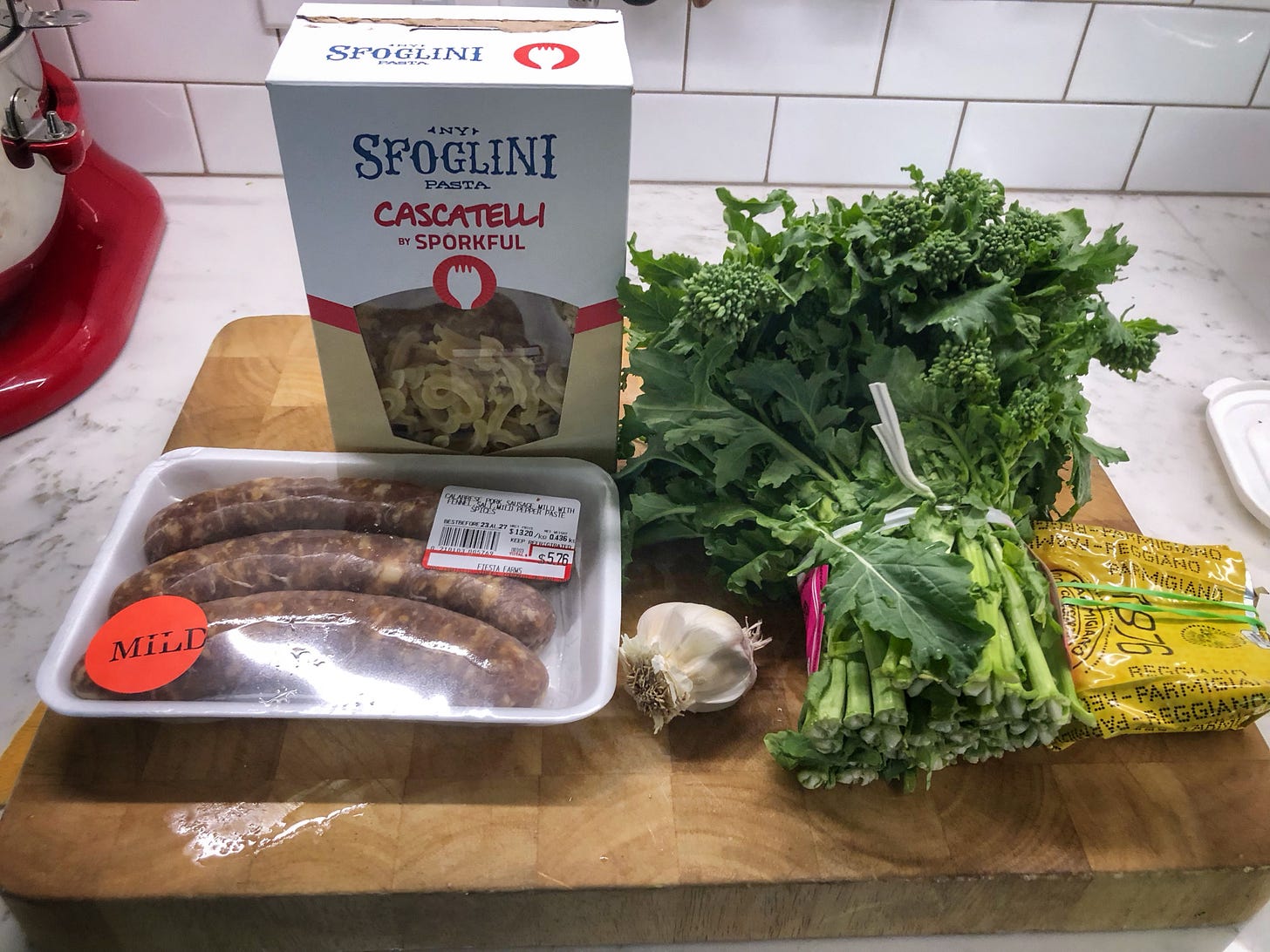34. Al Dente and Done
Would I lie to you?
If you read recipes, you’ve doubtless run into one that’s made you say, “Bullshit, that can’t all happen in the time given.” Ones that say you can caramelize onions in 10 minutes, for instance. Or ones that say the prep time is 10 minutes but have 10 different ingredients that need to be peeled and chopped. And then there are the pasta recipes that insist that the rest of the meal can be made in the time it takes to boil the water and cook the pasta. I am always so highly suspicious of the claim that I never try to see if it’s true. But first…
Last issue I wrote about making Hugh Fearnley-Whittingstall’s Sausage, Cabbage, and Pasta. And I wrote that although the idea of throwing the cabbage into the water with the pasta for the last few minutes to cook was a good one, I wished for a way to get some of the sweet, browned flavour of sautéed cabbage into the dish.
The next time I was making it, I realized there was: instead of putting the cabbage in with the pasta, put it in with the sausage. Or, rather, after the sausage has finished browning, sautée the pasta in the same pan, scraping up all of the browned bits left behind as well.
The next time I was making it, I realized that I could replace the cabbage, which was tasty but made for a very pale-looking meal.
What if instead I made it with cabbage’s distant and slightly flamboyant cousin, rapini? I did and it was terrific. But then I realized, “I think this is the one. I think I can prep and cook it all in the time it takes to boil water and cook the pasta.” It helps that I make the dish with cascatelli,1 which takes 12 to 15 minutes to cook. Don’t try this with angel hair pasta.
Anyone with even mediocre knife skills, I think, can accomplish this. There’s very little chopping. The one “cheat” is that you should have your ingredients and the pans you’ll use out and at the ready. I make no guarantees for timing if you keep having to rummage through the fridge and cupboards for things.
So what are the ingredients?
Half a pound of a short, sturdy pasta like cascatelli or, more conventionally, like penne or cavatelli
Two Italian sausages, your choice of hot or sweet2
One bunch of rapini
As much garlic as you like
As much Parmigiano Reggiano (or whatever hard grating cheese you prefer) as you like
Salt, olive oil, a splash of white wine, etc.
For pans, you’ll need a pot to cook the pasta in, plus a 12” skillet with a lid to cook the sausage and rapini. A bunch of one-eighth sheet pans are also handy to have around to hold ingredients or to act as spoon rests.
Start by filling the pasta pot with cold water. A good amount but not too much, since the less water the starchier it will be, which will be good later on. Salt it very generously and set the burner to high.3 Then get to prepping.
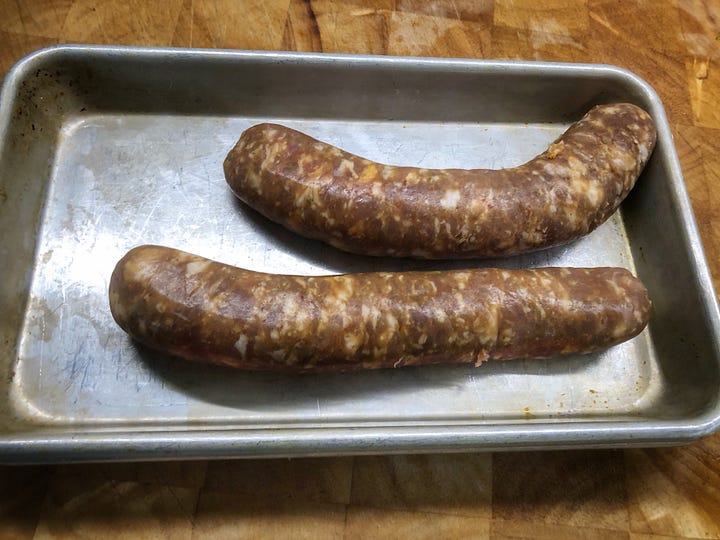


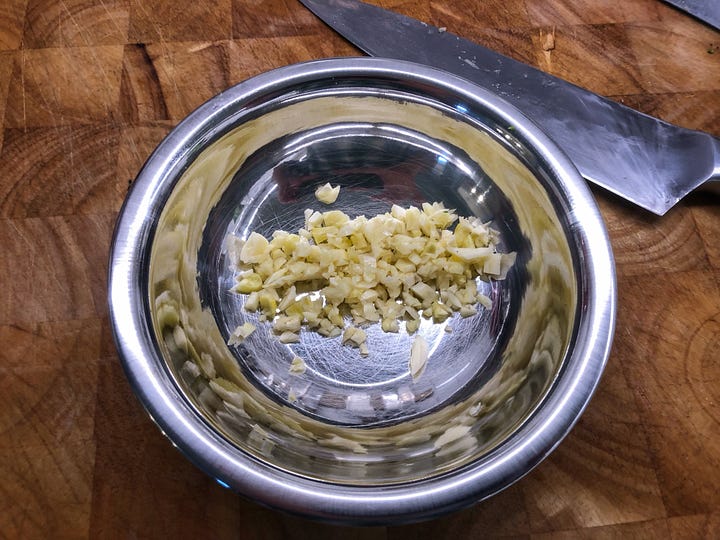
Remove the sausages from their casings and set them aside. Trim the stems of the rapini and then chop the rest into bite-sized pieces. (Keeping the twist tie that holds the bunch together can make this job easier.) Rinse the rapini in a colander, but don’t shake off the excess water. It’ll be useful later. Grate your cheese. Mince your garlic. Or slice it. Or however you like your garlic to be in dishes. That’s all the prep you have to do. The water has probably not boiled yet. Take a minute to clean up your prep area so you don’t have to do it later.
It’s preferable to start cooking the rest of the dish before your water boils, but if it boils first, just let it bubble away until you get the rest going. Yes, that’s another little cheat, but as I wrote last time, Gordon Ramsay isn’t going to yell at you for it.
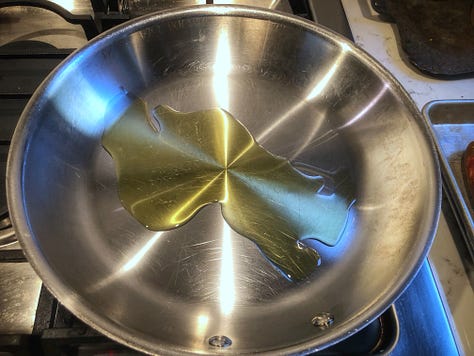
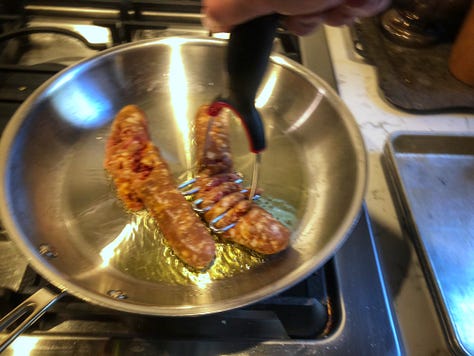


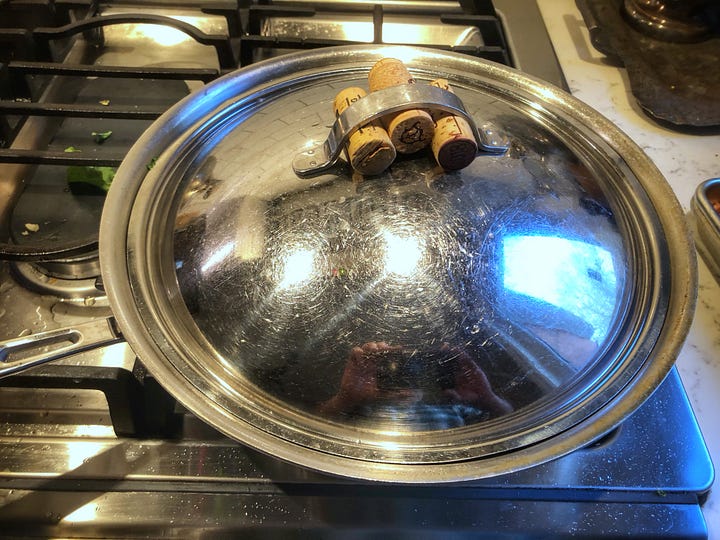
Heat a tablespoon or two of olive oil over medium-high (high-medium, really). When it’s just shimmering, add the sausages and break them into small pieces. A potato masher is helpful, but you can also just use the side of your spoon or spatula. Let it cook undisturbed for a minute or so to let it start browning. This is probably a good time to add your pasta to the water; stir the pasta somewhat frequently until it is almost cooked through.
Once the sausage is nicely browned, remove it from the pan and in its place add your still quite wet rapini and the garlic, then immediately cover the pan. Lower the heat to just below medium and let it steam for about three minutes. This will get rid of a lot of the bitterness that people often dislike about rapini. If you’re worried about the pan boiling dry, crack the lid a bit and splash in some white wine (or water). Remove the lid and sauté the rapini until it’s tender but still a bit firm, just a few minutes. Add a generous pinch of salt and then stir the sausage back in. Check the seasoning again.


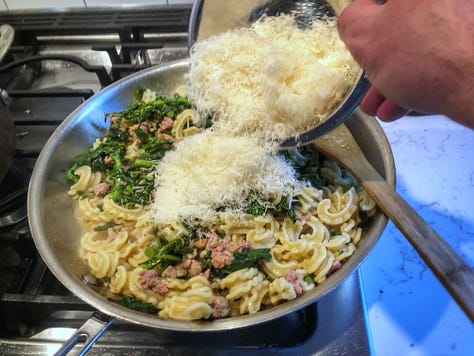
When the pasta is just about cooked, add it to the pan with the rapini and sausage. If you’re straining your pasta, be sure to save a cup or so of the starchy cooking water. I just scoop my pasta directly from the pot to the pan with a spider strainer. Add enough cooking water to cover the bottom of the pan and mix everything together over medium-high heat. The goal is to finish cooking the pasta as the starchy water from the pot emulsifies with the fat in the pan. This will be helped by adding the cheese. Mix to combine with everything else. Stir constantly and soon the water at the bottom of the pan will go from looking watery to looking saucy. If you’ve timed it right, that’s the same moment your pasta is cooked. If not, add a bit more water and keep stirring.
And that’s it. I took the photo of the ingredients at 6:49 and the photo above at 7:20. For someone who used to (and still occasionally does) take hours to prepare dinner, this is a goddamn miracle is what it is. Lots of variations are possible, of course. Different kinds of sausages. Another vegetable with a similar cooking time. Toss a couple of anchovies in with the rapini. So many places you can take it.
If you try to make it, let me know how it goes! You can leave a comment below or, if you’re a subscriber you can just reply to this email. And if you post a photo to instagram, I’d be mighty grateful if you were to tag @the_plate_cleaner.4
What I’m consuming…
The Flavor Equation by Nik Sharma. This was in this year’s gift guide as something I would like to receive. I didn’t get it then, but Beth gave it to me for my birthday,5 which was earlier this month. I haven't delved too deep into it yet, but I've made a few things that have been terrific. The Hakka Chicken Chow Mein was excellent. I look forward to reading more about his theory of how different qualities of food like richness, sweetness, and savouriness combine to create great dishes.
What’s for Tea. You will either find this YouTube channel endlessly charming or a horrific, carb-on-carb-on-carb nightmare. A woman in Prestwick, Scotland6 posts videos of how to make some of her favourite dishes, haul vids of all the groceries she bought during the week, and my favourite—a recap of all the dinners her family had that week. Lots of potatoes7 and pies, often together!
What’s on the menu…
With the weather turning nice, I’m looking forward to setting up the outdoor cooking space. I picked up a second-hand Napoleon smoker at the end of last summer and I’m looking forward to getting more experience with it. And this will be my third summer with the propane Ooni pizza oven as well. By the end of the indoor pizza season,8 I felt like I was really hitting my stride. But the indoor New York-style dough is a very different animal from the outdoor Neapolitan-style dough. I don't think I have the latter figured out quite as well yet.
Baby fruits. I picked up some baby mangoes from Ample, our local Asian supermarket, and they were fantastic. Hats off to JP for turning me onto them. Sweet and fragrant and gone in about three bites, they’re almost like tiny Alphonso mangoes. They were out of stock this week, but they did have sugar mangoes which are slightly larger and slightly less fragrant. I also picked up some two-bite turbana bananas that are very sweet with a mild banana flavour. I think it may be the first non-Cavendish banana I’ve ever had. They’re a great snack when you don’t want a whole banana (and yet you do).
But not so high if you have a gas stove and your flame is wider than the bottom of your pan, of course. Then you’re using gas to heat the air and probably the handles of your pot instead of the water.
You’re not following me on Instagram? Why aren’t you following me on Instagram?
Thanks!
It’s in Ayrshire, where my maternal grandfather’s family, the McCreadys, is from.
I learned in one of her videos that McCain’s has been cheating us of the frozen baked (or “jacket”) potatoes that are available in the UK.
The indoor pizza season lasts as long as our cold room is cold enough to keep the dough in for the three-day ferment it requires. There’s never enough space in the fridge for the dough containers.




